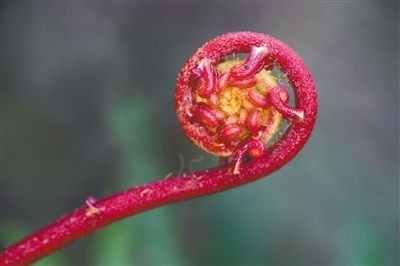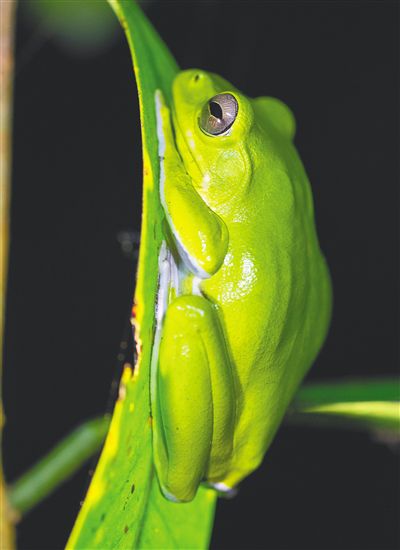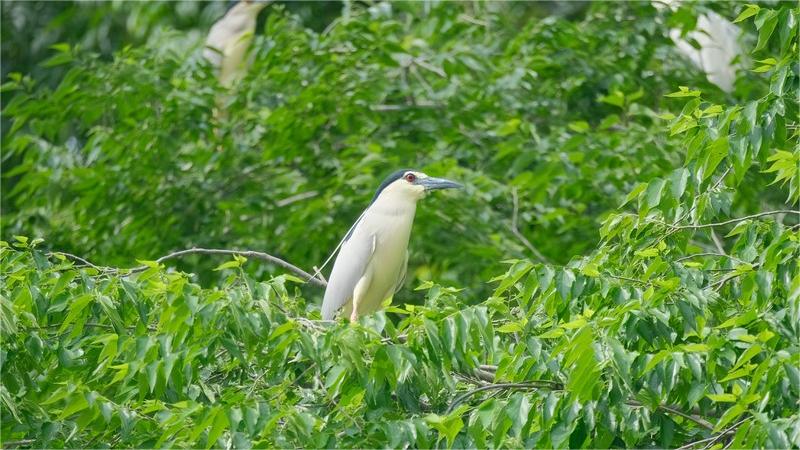Technology gives ecological protection an edge in Hainan Tropical Rainforest National Park

Photo shows a Hainan gibbon in the Hainan Tropical Rainforest National Park in south China's Hainan Province. (Hainan Daily/Li Tianping)
Since the Hainan Tropical Rainforest National Park in south China's Hainan Province was set up as a pilot area in 2019, the national park has comprehensively built monitoring platforms, launched ecological protection and restoration, and strengthened technical support to contribute to ecological protection.
After a rain shower, Fu Huiquan, a forest ranger with the Yinggeling branch of the Hainan Tropical Rainforest National Park Administration, went on a patrol. He took a photo of a rare plant with a mobile application. Almost at the same time, the photo, along with information including the shooting location, was recorded in a smart rainforest big data platform.
The smart rainforest big data platform is also connected with monitoring cameras that automatically capture and transmit activities in the national park in real-time.

A diving instructor "plants" corals under the sea near Wuzhizhou Island, Sanya city, south China's Hainan Province. (Hainan Daily/Wang Chenglong)
Over the past years, the Hainan Tropical Rainforest National Park Administration has installed monitoring cameras, vibration fiber optic cables, and sensors at key positions of the national park, building an all-encompassing "electronic fence" through the application of various technologies, according to an executive of the administration. The "electronic fence" allows for 24-hour monitoring of unauthorized individuals or vehicles.
The national park has launched the building of a space-air-ground integrated monitoring system to enhance ecological monitoring capabilities with digital and intelligent equipment, injecting new vitality into the protection of the rainforest ecology.
The Hainan gibbon is the most important flagship species, a truly symbolic species for the national park. Their survival depends on not only a sound ecology but also the application of technologies.

Egrets fly in Wanning city, south China's Hainan Province. (Hainan Daily/Yuan Chen)
In recent years, Hainan has issued the Hainan gibbon conservation action plan framework and promoted the steady implementation of multiple scientific research and conservation projects for the species. As such, the population of Hainan gibbons had risen to 37 individuals in six groups at the end of 2022 from seven to nine individuals.
Over the past years, scientific research resources have provided strong support for the construction of the national park. It has collaborated with various research institutes to carry out research and protection work on biodiversity.
Since 2019, the national park has revealed at least 54 new species to researchers. Several rare and endangered species that had not been sighted there in years have also reemerged - such as the Asian water monitor and Chinese pangolin.

Photo shows a bud of blechnoid in the Wuzhishan section of the Hainan Tropical Rainforest National Park in south China's Hainan Province. (Hainan Daily/Li Tianping)

Photo shows the fruits of a plant in the Wuzhishan section of the Hainan Tropical Rainforest National Park in south China's Hainan Province. (Hainan Daily/Li Tianping)

Photo shows a tree frog in the Wuzhishan section of the Hainan Tropical Rainforest National Park in south China's Hainan Province. (Hainan Daily/Li Tianping)
Photos
Related Stories
- Researcher devoted to safeguarding ecosystem stability in China's Changbai Mountains
- Ecological conservation efforts yield fruitful outcomes in Qinghai, China
- Marine ecological pasture complex gains development momentum in E China
- Technology enhances ecological protection in China
- China establishes world's largest ecological monitoring network system: MEE
- Putian in SE China's Fujian promotes green development of marine fishery sector
- ChineseToday | Raptor rehabilitator in Shenyang
Copyright © 2024 People's Daily Online. All Rights Reserved.









